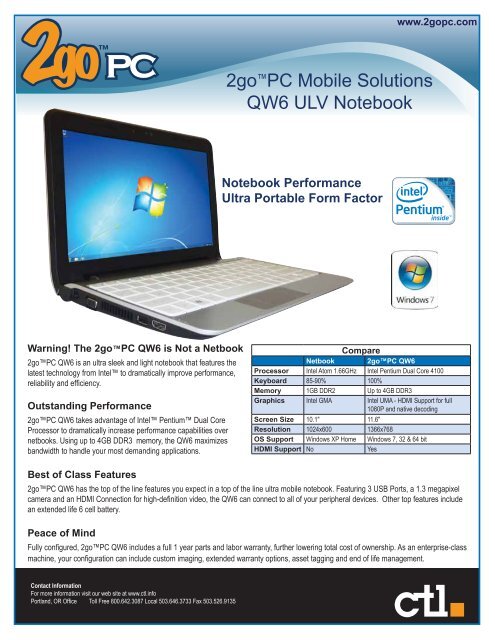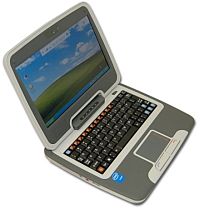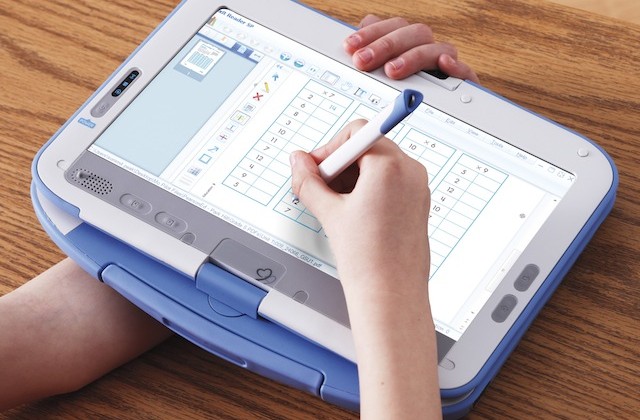

- #Intel 2go pc atom processor year Bluetooth#
- #Intel 2go pc atom processor year plus#
- #Intel 2go pc atom processor year windows#
Thinner is just worse - less usable - if it means giving up ports, expansion slots and a removable battery.)From the photos and videos, it also looks extremely glossy, which may not go down too well with the comfortably-matt ThinkPad crowd.The X360 is expected to reach Europe next month. (Well, not from the point of view of portability. Not that it makes the slightest bit of difference in reality.

The X360's thickness is 1.67-3.09cm, which compares with the MacBook Air's 0.4-1.94 cm. This gives Samsung no hope of getting anywhere near the "thinnest" machine. But I'll be impressed if I get more than 5 or 6 hours.From what I can see of the various IFA videos and photos, the battery projects at the back, like most 6-cell packs. With an SSD and 6-cell battery, this enables Samsung to claim a battery life of "up to 10 hours", depending on use.
#Intel 2go pc atom processor year Bluetooth#
Other features include a fingerprint reader, webcam, Bluetooth and Wi-Fi.Unlike the sometimes-overheating Air, the X360 also has a proper ULV (Ultra Low Voltage) processor - probably not cheap - and X4500 graphics. You can also have either a Solid State Drive (64GB or 128GB) or a traditional 120GB drive.

(There are lighter machines such as the Toshiba Portege, but with 12.1inch instead of 13.3inch screens.)Samsung says: "the X360 sets a completely new standard in mobile computing - offering a comprehensive set of features unlike anything of its kind on the market."Well, it has more features and ports than the heavily compromised Air, including a 7-in-1 card reader, three USB ports, PCI Express Card Slot (34mm), HDMI, VGA, RJ45 (Ethernet) and a docking slot. At 1.27 kg, it's lighter than a MacBook Air at 1.36kg. Samsung has been showing off its forthcoming X360 laptop at the IFA exhibition in Berlin. The IdeaPad S10 looks quite similar to the Acer Aspire One, but Lenovo has a better chance of selling netbooks to corporate users, who are still mostly ThinkPad buyers.ĭell's netbook is still awaited with interest. IBM used to sell very similar machines, including the excellent ThinkPad 240X, but for around $2,000 or more. The announcement was made from Research Triangle Park in North Carolina, which is where IBM ThinkPad announcements were made before Lenovo bought IBM's PC division.
#Intel 2go pc atom processor year plus#
Otherwise there will be two configurations: 512MB and an 80GB hard drive, and 1GB plus a 160GB hard drive. It will also have Wi-Fi, Bluetooth, an 85%-size keyboard and an Intel Atom processor. It looks as though it will be bigger than average, having a 10.2 inch LED screen, which is the sort of size that became hugely popular on early IBM ThinkPads.

It also "plans to introduce netbook models designed specifically for students and educators."
#Intel 2go pc atom processor year windows#
The disadvantage of these processors was lower FSB - only 100 MHz.All Pentium 3 Xeon CPUs were packaged in the same bulky and heavy 330-contact SECC cartridge as Pentium II Xeons.Ĭhina's Lenovo says it will enter the netbook market in October with the "super-slim, super-small" $399 IdeaPad S10 running Windows XP. Later Intel released real Xeon processors that could work in 4-way systems and had very large, up to 2 MB, L2 cache. Performance of these Xeons was no better than performance of desktop processors. Like desktop Pentium III CPUs, they had 256 KB level 2 cache integrated on the processor core and didn't support quad-processing. All Xeon microprocessors with 133 MHz FSB were in effect Pentium III Coppermine processors in Xeon package. There were two different versions of these processors - with 100 and 133 MHz Front Side Bus frequency. The main difference between Tanner Xeons and Katmai Pentiums lies in the size and operating frequency of level 2 cache: the Xeon CPUs have much larger, up to 2 MB, L2 cache running at CPU frequency, that is twice as fast as Katmai L2 cache.Next generation of Xeon processors was produced using 0.18 micro technology. Pentium III Xeon family was manufactured using two different cores:0.25 micron Xeon processors are based on Tanner core, which is very close to Pentium III Katmai core.


 0 kommentar(er)
0 kommentar(er)
